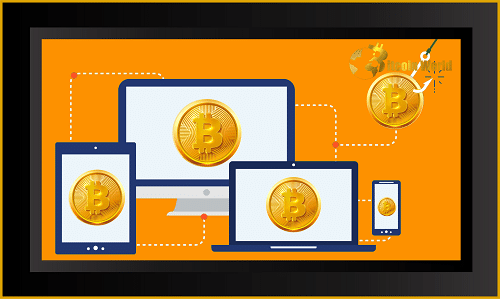Hold on to your digital wallets! A new report from SonicWall reveals a startling trend in the cybercrime landscape: cryptojacking is back with a vengeance, surging a massive 269% in the first half of this year. If you thought ransomware was the only crypto-related threat to worry about, think again. This silent menace is quietly siphoning off your device’s processing power to mine cryptocurrency for hackers, and the finance industry is feeling the heat.
Cryptojacking’s Alarming Rise: Key Takeaways
The numbers don’t lie. While some sectors saw a decrease in cryptojacking attacks, the overall picture is concerning. Here’s a quick breakdown:
- Massive Surge: Cryptojacking incidents skyrocketed by 269% in the first half of the year, according to SonicWall’s research.
- Finance Under Fire: Cyberattacks targeting the finance industry have increased fivefold compared to the retail sector. That’s a significant shift in focus.
- Shifting Targets: Remember when government, healthcare, and education were the primary targets? Attacks on these sectors plummeted by 78%, 87%, and 96% respectively in H1 2022. This doesn’t mean they’re safe, but the criminals are clearly pivoting.
What Exactly is Cryptojacking, and Why Should You Care?
Imagine your computer or phone suddenly running slower than usual. You might blame it on old age or too many open tabs. But what if the real culprit was a hidden program secretly using your device’s resources to mine cryptocurrency for someone else? That’s cryptojacking in a nutshell.
Essentially, a hacker sneaks a piece of malicious software onto your device without your knowledge. This software then works in the background, using your processing power to solve complex mathematical problems needed to generate new cryptocurrency. It’s like having a silent, energy-guzzling tenant living in your device, racking up your electricity bill (in terms of processing power) without you even knowing it.
Terry Greer-King, SonicWall’s VP for EMEA, puts it perfectly: “It [cryptojacking] has a lower potential of being detected by the victim; unsuspecting users across the world see their devices get unaccountably slower, but it’s hard to tie it to criminal activity, much less point to the source.” This stealth factor is what makes cryptojacking so insidious.
The Numbers Game: A Closer Look at the Data
While the percentage increase is alarming, let’s dive a bit deeper into the overall numbers:
- Overall Increase: Cryptojacking attacks reached a staggering 66.7 million in the first half of 2022.
- Lower Victim Percentage: Interestingly, despite the rise in attacks, the average percentage of victims targeted by cryptojacking was actually lower in H1 2022 compared to H1 2021. This could suggest that attacks are becoming more concentrated on specific, high-value targets.
- The Summer Slump: There’s a known phenomenon called the ‘cryptojacking summer slump,’ where attacks tend to decrease in the second quarter. The data from recent years supports this trend.
Based on these trends, SonicWall anticipates that cryptojacking activity will likely remain subdued in the third quarter. However, this doesn’t mean we can let our guard down.
Why the Shift to Cryptojacking? The Aftermath of Ransomware Crackdowns
Governments worldwide have been aggressively targeting ransomware operators, increasing awareness and implementing stricter measures. This pressure seems to be pushing cybercriminals towards less risky alternatives, and cryptojacking fits the bill.
Think about it: ransomware is loud and disruptive, locking down systems and demanding hefty ransoms. Cryptojacking, on the other hand, is stealthy and operates in the shadows. It might not yield a massive immediate payout like a successful ransomware attack, but it can generate a steady stream of income over time without attracting as much attention.
A prime example of this shift is the AstraLocker ransomware group, which reportedly transitioned to cryptojacking amid increased government scrutiny. This highlights a potential long-term trend.
The Future of Cryptojacking: What to Expect
As long as there’s profit to be made from silently mining cryptocurrency, cryptojacking isn’t going anywhere. The low-risk, high-reward nature of this cybercrime makes it an attractive option for malicious actors.
The report suggests a concerning possibility: more ransomware groups may follow in AstraLocker’s footsteps and pivot towards cryptojacking. This could lead to a sustained increase in attacks, even if individual incidents are harder to detect.
Staying Ahead of the Curve: Protecting Yourself from Cryptojacking
So, what can you do to protect yourself and your organization from this growing threat?
- Keep Software Updated: Regularly update your operating systems, browsers, and other software to patch security vulnerabilities that cryptojacking malware can exploit.
- Install a Robust Antivirus: A good antivirus program can detect and block known cryptojacking scripts.
- Be Cautious with Downloads and Links: Avoid clicking on suspicious links or downloading files from untrusted sources. This is a common way for cryptojacking malware to spread.
- Monitor System Performance: Keep an eye on your device’s performance. Unexplained slowdowns, high CPU usage, and increased energy consumption could be signs of cryptojacking.
- Educate Yourself and Your Team: Awareness is key. Make sure you and your team understand the risks of cryptojacking and how to identify potential threats.
The Bottom Line
The resurgence of cryptojacking is a stark reminder that the cyber threat landscape is constantly evolving. While ransomware remains a significant concern, the rise of this stealthier form of cybercrime demands our attention. By understanding how cryptojacking works and taking proactive steps to protect ourselves, we can mitigate the risks and ensure our devices aren’t silently contributing to someone else’s crypto fortune. Stay vigilant, stay informed, and stay secure!
Disclaimer: The information provided is not trading advice, Bitcoinworld.co.in holds no liability for any investments made based on the information provided on this page. We strongly recommend independent research and/or consultation with a qualified professional before making any investment decisions.


